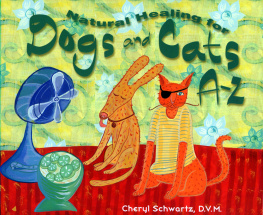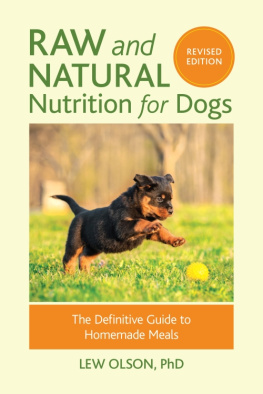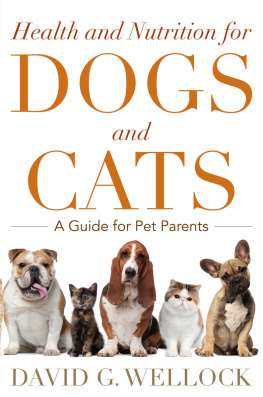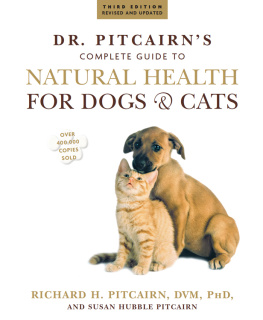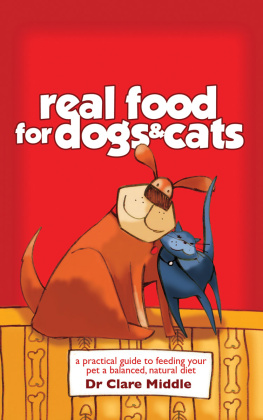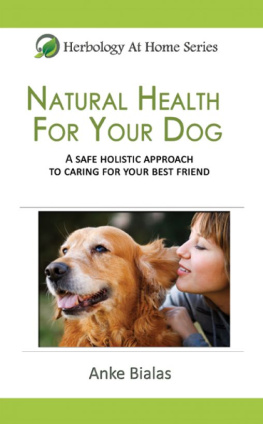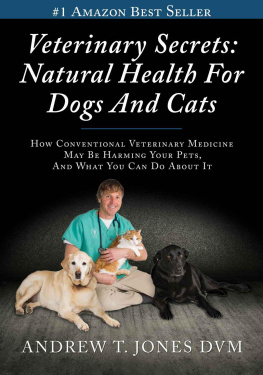
Mention of specific companies, organizations, or authorities in this book does not imply endorsement by the author or publisher, nor does mention of specific companies, organizations, or authorities imply that they endorse this book, its author, or the publisher.
Internet addresses and telephone numbers given in this book were accurate at the time it went to press.
This is fourth revised edition published by Rodale Inc. First published in 1982 by Rodale Inc.
1982, 1995, 2005, 2017 by Richard H. Pitcairn and Susan H. Pitcairn
All rights reserved. No part of this publication may be reproduced or transmitted in any form or by any means, electronic or mechanical, including photocopying, recording, or any other information storage and retrieval system, without the written permission of the publisher.
Page numbers listed below refer to the print edition of this book. Illustrations by Susan H. Pitcairn, with appreciation to the following people who supplied their photos as chapter opening illustration references: James Peden (Chapters 2, 9, 13), Marybeth Minter and Jack Scalia (Chapters 15, 18), Colleen Patrick Goudreau (Chapter 4), Phil Brazell (Chapter 14), Samantha Clarke (Chapter 5), Shutterstock: Clari Massimiliano (Chapter 6), Shutterstock: Tompet (Chapter 7), Shutterstock: MyImages-Micha (Chapter 11), Shutterstock: Happy Monkey (Chapter 12), Shutterstock: Fly_Dragonfly (Chapter 16).
Illustrations on the following pages by Lizzie Harper: 311, 312, 462, 465, 467.
Book design by Tara Long
Library of Congress Cataloging-in-Publication Data is on file with the publisher.
ISBN 9781623367558 trade paperback
ISBN 9781623367565 e-book

We inspire health, healing, happiness, and love in the world.
Starting with you.
RodaleWellness.com
We dedicate and offer this to the animals of the earth, who have given us friendship and companionship, and have in many ways been our teachers. We journey together. It is our deepest hope that what we contribute here will have lasting benefit both to those special dogs and cats that are part of our human family and to the much larger circle of animals with whom we share this beautiful and precious planet.
We also acknowledge and deeply appreciate the countless teachers, students, writers, colleagues, clients, editors, friends, family, readers, and loving supporters who have made all the difference in our lives and our work. You know who you are and you live in our hearts always.
CONTENTS
INTRODUCTION:
A DEEPER LOOK AT NATURAL AND HOLISTIC
S tarting with the first edition of this now-classic book in 1981, we have been fortunate to help pioneer the holistic veterinary movement and its more natural approach to animal care, a full-fledged movement with associations, conferences, journals, websites, books, magazines, and products.
Looking back, we feel blessed to have known so many outstanding, dedicated individuals in this movement, people who truly seek to do their very best for their animals.
Looking ahead into the coming decades, we sense a shift in the wind, one that beckons all who value the natural and holistic approach to expand the scope of our vision to embrace all animals, including billions of disappearing wild animals and those suffering daily in hidden factory farms. All urgently need our thoughtful and loving attention. Widening our view still further, we see a very large patient in the waiting room upon whom all others depend: Earth herself.
There is no better group of people to help heal our ailing planet than those who value a natural, holistic approach to living and healing. But to live up to our full potential, it is wise that we reexamine the assumptions beneath our defining ideas: holistic and natural. Such a reexamination is necessary to understand fully all the benefits and reasons for the rather groundbreaking changes to the diets of dogs and cats that we recommend in this edition, changes that we see as exciting and appropriate for all species.
Holistic and NaturalA Deeper Look
Holistic derives from the word whole. In medicine, we have tended to interpret a holistic approach as a comprehensive approach, one that skillfully addresses the many factors that impact an individuals health, including diet, exercise, stress, toxins, pathogens, endocrine function, and even unseen energy fields encompassed within, or expressing as, that individual.
Important as these factors are, there is another, more profound meaning to wholeness. In that view, we recognize a supreme, guiding intelligence that is more than the sum of the parts, an unseen force that both transcends and orchestrates all of life. Physicist David Bohm called this the implicate order, which brings cohesion not only to the microcosm and the macrocosm but to the immensely complex patterns of evolution and ecosystems that we call life. In its wholeness, it seems to generate solutions and adaptations that are optimal for all life as it unfolds, seeking balance and order.
Its important to bear this view of holism in mind. Otherwise, we tend to restrict our understanding of another tenet: the natural.
While we rightly take our cues from nature in attempting to provide the most natural diet, lifestyle, home, and relationships for our companion animals, we too often limit our considerations of what is natural to the patterns of the past, to nature as it was.
In so doing, we easily overlook the infinitely creative potential of the holistic intelligence within nature, which has helped all life-forms adapt to changing conditions throughout millions of years, often in relatively rapid evolutionary leaps. Genes can and do change. They have the power to express in entirely different ways, and something else controls that, not just DNA. Unless we see that clearly, some of our arguments for what is natural become arguments for the limits of nature, animals, and ourselves.
This is a key point in openly considering the groundbreaking recommendations in this edition to feed our pets and ourselves lower on the food chain, for the good of all. Under the banner of the natural, many readers may acknowledge that a plant-centered diet fits us as primates. But by the same token, many will object that meat is the only proper diet for animals who have evolved as carnivores as recommended by the SARF (Species Appropriate Raw Food) model, which usually means not only muscle meats, but also bones and a variety of organsas much like prey as possible.
Here is our concern. Without considering that the greater holistic intelligence within nature may be seeking solutions appropriate to all life today, many of us can easily lock ourselves and our animals into meat-heavy diets that not only harm other animals and the health of our planet, but perhaps our dogs and cats as well. Thats because the vast majority of environmental toxins enter our bodies from the fatty tissues of animal products, along with residues of antibiotics, hormones, and herbicides.
Likewise, an overly limited view of nature could cause us to deny reports that many pets have thrived on plant-based diets for decades (see ), ignore gene studies that show that dogs adapted to eating grains at the dawn of civilization, and repeat the myth that dogs and cats cant digest grains, even when studies show they can and that the greatest number of pet allergies are actually to meat.


